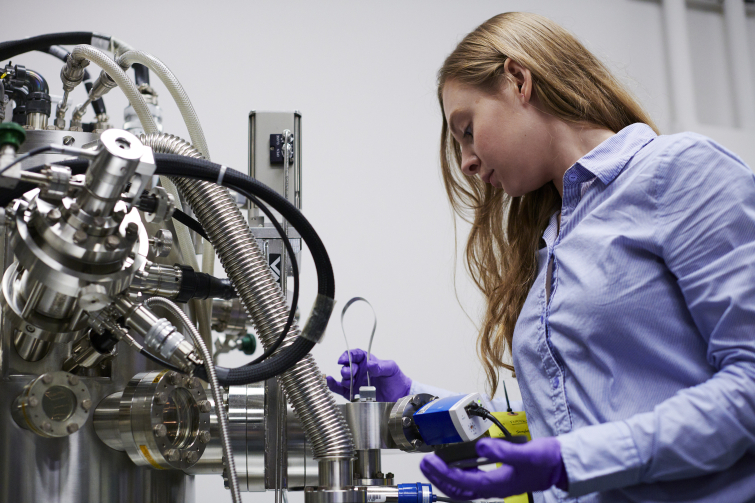The PHI VersaProbe XPS Microprobe is a multi-technique surface analysis instrument based on PHI's highly developed scanning X-ray microprobe technology in the Swagelok Center for Surface Analysis of Materials. A most important attribute of the VersaProbe is that it can produce a focused, highly monochromatic X-ray beam that can be scanned over the specimen surface. A point source of X-rays is created by focusing an electron beam onto an Al anode. A monochromator, consisting of an ellipsoid-shaped crystal, collects X-rays from the point source and focuses them on the surface of the specimen. The focused X-ray beam can be scanned across the specimen surface by correspondingly scanning the electron beam across the surface of the aluminum anode. A major advantage of this design is that most of the photoelectrons generated by the focused X-ray beam are actually collected by the electron energy analyzer. The spot size can be varied between less than 10 µm diameter (for highest spatial resolution) to 100 µm (for highest sensitivity). The field of view can be as large as 1500 µm by 1500 µm. There are two options for maximum sample dimensions. Option 1 allows for samples less than 40 mm x 40 mm x 5 mm and Option 2 allows for thicker, smaller samples less than 10 mm x 10 mm x 7 mm. In addition to the X-ray beam focusing and scanning ability, the VersaProbe provides the following techniques:
- High-performance micro-area spectroscopy
- High sensitivity large-area spectroscopy
- Chemical state imaging
- Angle-dependent spectroscopy
- X-ray-induced secondary electron imaging
- High-performance sputter depth-profiling
- Hands-off charge neutralization
Software for surveys, high-resolution multiplexes, sputter depth profiles, line scans, chemical images, automated analyses, and user-defined settings are all available. The software library allows for post-analysis data processing (background subtraction, smoothing, peak identification, linear least-squares fitting, target factor analysis, curve and peak analysis, and separation of multiple chemical states in maps, line scans, profiles).

